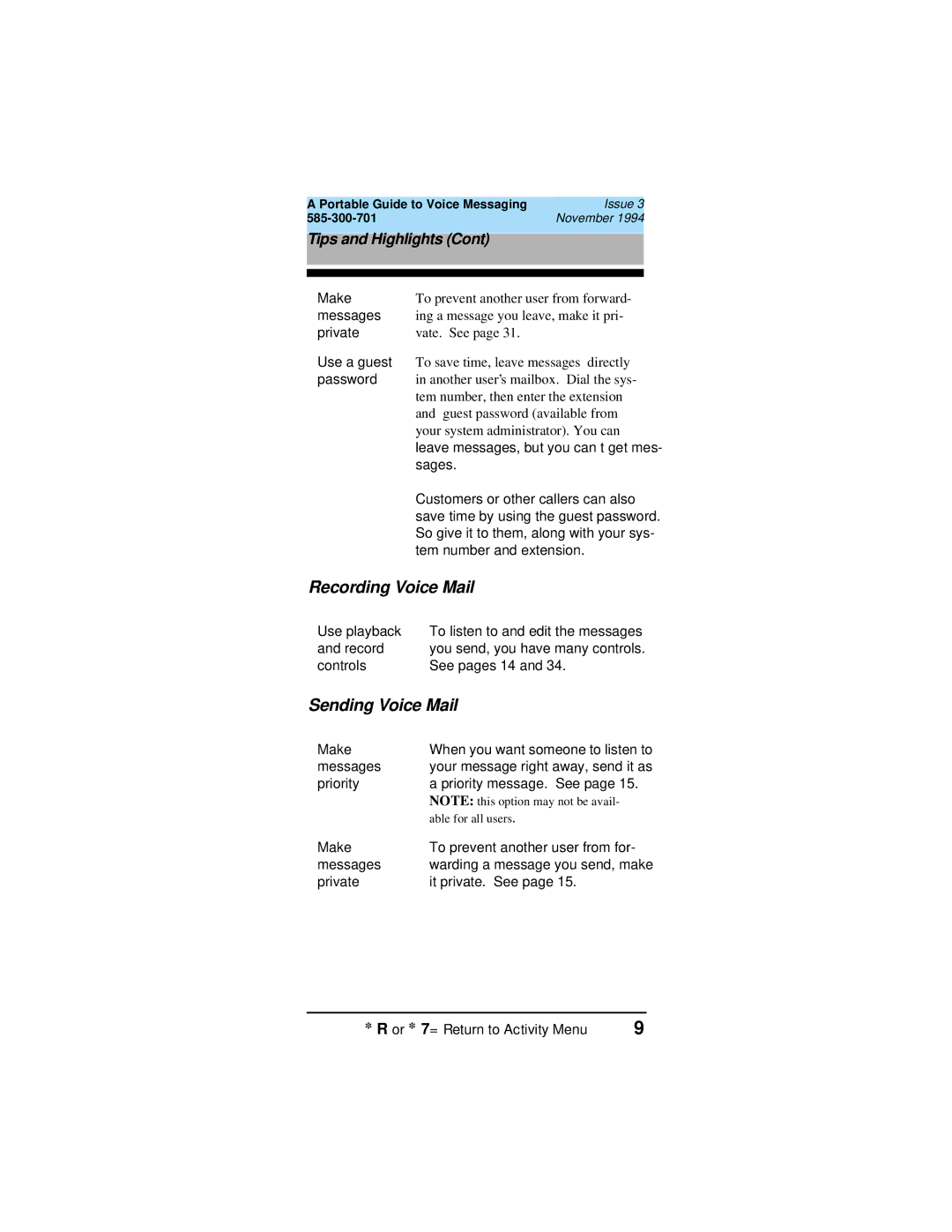A Portable Guide to Voice Messaging |
| Issue 3 | |
| November 1994 | ||
|
|
| |
Tips and Highlights (Cont) |
|
| |
|
|
| |
|
|
|
|
|
|
| |
Make | To prevent another user from forward- | ||
messages | ing a message you leave, make it pri- | ||
private | vate. See page 31. |
| |
Use a guest | To save time, leave messages | directly | |
password | in another user’s mailbox. Dial the sys- | ||
| tem number, then enter the extension | ||
| and guest password (available from | ||
| your system administrator). You can | ||
| leave messages, but you can’t get mes- | ||
| sages. |
| |
Customers or other callers can also save time by using the guest password. So give it to them, along with your sys- tem number and extension.
Recording Voice Mail
Use playback | To listen to and edit the messages |
and record | you send, you have many controls. |
controls | See pages 14 and 34. |
Sending Voice Mail | |
Make | When you want someone to listen to |
messages | your message right away, send it as |
priority | a priority message. See page 15. |
| NOTE: this option may not be avail- |
| able for all users. |
Make | To prevent another user from for- |
messages | warding a message you send, make |
private | it private. See page 15. |
* R or * 7= Return to Activity Menu | 9 |
